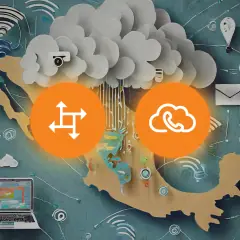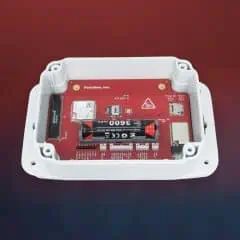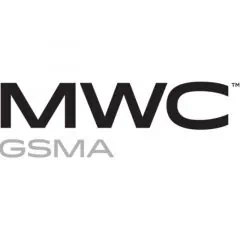PortaOne is continuing to enhance and expand our platforms every seven weeks, bringing you new features, capabilities, and ways to profit in PortaSwitch, PortaBilling, PortaPhone, the Add-on Mart, and more. In this webinar, PortaOne product officer Mike Kidik and project manager Svitlana Melnychuk break down what you need to know about what’s arrived recently, starting with PortaSwitch MRs 114, 115, 116, and 117. Watch the full webinar below, or read on for a quick-hit summary of all the top new features and benefits our expert presenters discussed. (Don’t miss the sneak peek at what you can expect in our upcoming releases, plus a bonus white paper!)

Webinar Highlights
What’s new in PortaSwitch
1. Call-screening blocklist for telemarketing numbers
Now you can easily reduce unwanted telemarketing calls and enhance service quality by uploading a single list of phone numbers and creating a simple call screening rule. Once uploaded, the list can be used across multiple customers and accounts, streamlining administration. Users can create multiple lists and define how to handle calls from each one, choosing options like rejecting, forwarding, or sending to voicemail, without the need to set up complex parameters. Configuration is easy: just upload the list and create the call screening rule, which customers can also modify through the Cloud PBX Portal. Additionally, an API method is available for bulk rule creation for existing customers, making the process efficient and user-friendly.
2. Transcription of call records
Call transcription is an in-demand cloud PBX feature that can give your service a significant competitive edge. Enabling this feature allows users to download an automatically created transcription of calls as easily as they can now access call recordings. Transcriptions can be accessed for download through the self-care portal or via API, allowing supervisors and call center agents to quickly review calls, or even find specific moments from a conversation, allowing them to avoid spending time listening to the entire recording. This feature, which currently uses OpenAI’s Whisper, can be implemented via an Add-on Mart module subscription; this will enable future additions of new modules that use other providers, such as Google AI or Amazon Transcribe.
3. Separate charging for recording/transcribing
One-size-fits-all never works in a diverse business environment. This feature offers a more equitable pricing model for both light and heavy users of call recording. Now, you can set up a tariff for your call recording service and use two different rate codes, each with a price per hour: one to charge for call recording and one to charge for call transcribing. Also, you now can create bundles that include a specific number of hours for call recording and/or call transcription (e.g., 10 hours of call recording and 10 hours of transcription per month), allowing for more pricing options while adding revenue.
4. Improved portal for representatives and representative staff
Over the past few years, we have released new versions of our Reseller and Distributor portals, and we have now done the same for our Representative portal. Representatives (reps who act as sales agents on your behalf, whether they work in-house or as independent contractors) can now benefit from a modern web interface that is very similar to the Administrator interface. Plus, at the end of each billing period, they can generate revenue and payment reports to track revenue specifically brought in by customers they signed up. Recurring commissions can be automatically calculated using a revenue-sharing model that pays sales agents a recurring fee. This approach can be used both for internal staff and for external sales agents.
5. Improved portal for representatives and representative staff
We have replaced our former “CC Staff” portal for individual reseller staff members with a “Reseller Individual” approach within the Reseller portal. This is similar to the “Customer Individual” function we recently added that allows for customized logins and roles/access to be assigned to individual staff members. Any existing CC Staff users will be automatically converted to Reseller Individual users.
6. Simplified reseller product management via simultaneous charging
This feature is designed for service providers that create white-labeled products for their resellers for them to sell under their own brand. Administrators can share products with resellers under a simultaneous subscription charging model that charges both the end users and the resellers at the same time. This model helps providers collect revenue collect revenue in case resellers choose to bundle their services under a subscription fee instead of doing per-minute charges. You can adjust a new reseller’s subscription fee with upcharges or discounts, simplifying product management by using a few core products and customizing prices without creating new versions.
7. New third-party system integrations: netElastic, WTL, and IPLOOK
We have recently made available three new integrations. The first is traffic shaping with netElastic BNG (Broadband Network Gateway), which can monitor different types of traffic and reduce bandwidth once a specific limit is reached, similar to a DPI solution. Plus, we now have integrations for the WTL and IPLOOK mobile cores, which ensure accurate billing for calls, SMS, and internet access. These integrations have been rigorously tested, and will make it much easier to enter the mobile market, or even to replace your current mobile core system.
8. Simpler API troubleshooting
We have introduced the Trace ID feature to help developers who are working with the PortaBilling API identify the causes of errors in their code. This feature supplies tracking information in every API request, which is then included again in the API response from PortaBilling. This simplifies the process of locating specific log entries in order to help you understand request failures. Trace ID is not a mandatory parameter. If the client does not provide a Trace ID, it is automatically generated on the server side. Developers can then locate the Trace ID in the server logs and determine whether the issue was related to the code, or other factors.
What’s new in the PortaOne Cloud PBX Portal
Several new tools have been introduced to our Cloud PBX Portal to empower call center supervisors, boost team efficiency, and enhance the customer experience. These include:
- Supervisor dashboard: This enables features like Spy, Whisper, and Barge-in, allowing supervisors to monitor agent performance. It also provides easy access to call statistics for immediate training and support.
- Real-time call console: This feature, available with version 3.11, provides a list of active calls that is constantly updated in real time, meaning no more need for constant refreshing. Key benefits include improved visibility for administrators, faster decision-making for call center managers, reduced customer wait times, and the ability for both managers and agents to optimize performance.
What’s new in PortaPhone
It’s been a busy time for the PortaPhone team! Recent additions include:
- Chat functionality: PortaPhone now enables better team communication, with in-app instant messages and group chat functionality.
- SMS support: Users can now send SMS directly using PortaPhone. This opens new revenue opportunities, provides higher profit margins than traditional calls, and allows for scalable SMS packages tailored to client needs.
Embedded custom pages: You can now integrate tailored content directly into PortaPhone, whether that is support pages, special offers, or any other type of content that will support your business or empower your clients.
What’s new on the PortaOne Add-on Mart
We’ve expanded our CRM platform options through PressOne by adding Zoho CRM integration, following the HubSpot integration introduced in our last webinar. (If you would like us to work on a future integration with another CRM platform, please reach out to our team.) Additionally, we are pleased to present the PortaPhone web widget. This allows you to integrate a dialpad, phone book, and click-to-dial functionality directly into your CRM, CX platform, or cloud PBX portal. Authorized users can make and receive voice calls, access their contact list, and initiate calls by clicking on any phone number on a web page. The feature is white-labeled and ready for your own company branding, and is available via an Add-on Mart subscription.
What’s next for PortaSwitch?
The PortaOne team is currently working on a new tariff upload, after which the old web interface will be discontinued.
Development has also begun for charging by CLI and CLD. We have collected more than a dozen example tariffs in order to design a comprehensive solution – expect full implementation in early 2025.
Finally, we are actively developing API 2.0, and have added numerous methods for its improvement. Our focus in the upcoming months will be on extending the API methods required to develop sign-up portals. If you have any specific requests, please reach out to our team.
Bonus: Dual Version white paper
Telecoms often delay critical software updates for fear of service interruptions, or to avoid the cost of adding additional hardware. Dual Version PortaSwitch solves these problems with small-batch migrations and quick rollbacks, plus the option to deploy a newer version of PortaSwitch in the cloud. Our just-released, updated Dual Version white paper explains how it works, and how you can benefit: download it here!
If you have questions about any of these new features in PortaSwitch, PortaBilling, the Cloud PBX Portal, PortaPhone, or the Add-on Mart, or would like to share your ideas for future enhancements, contact our support team anytime at contact@portaone.com.


















